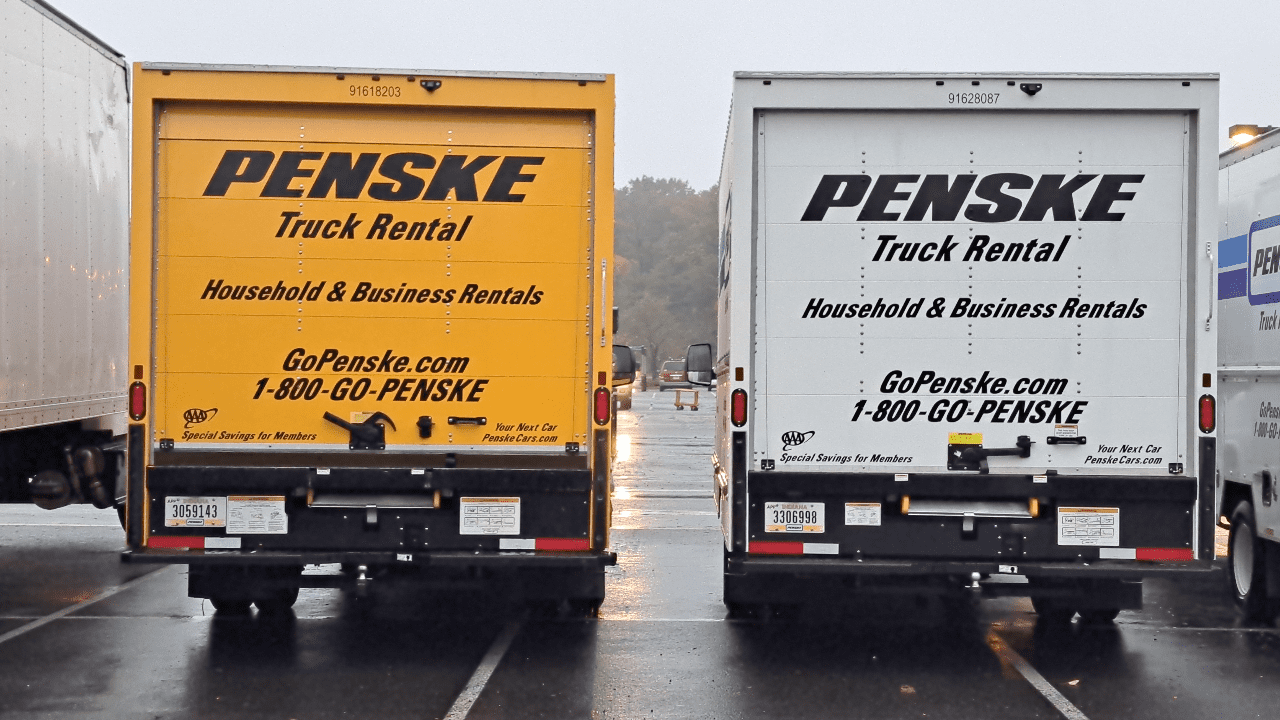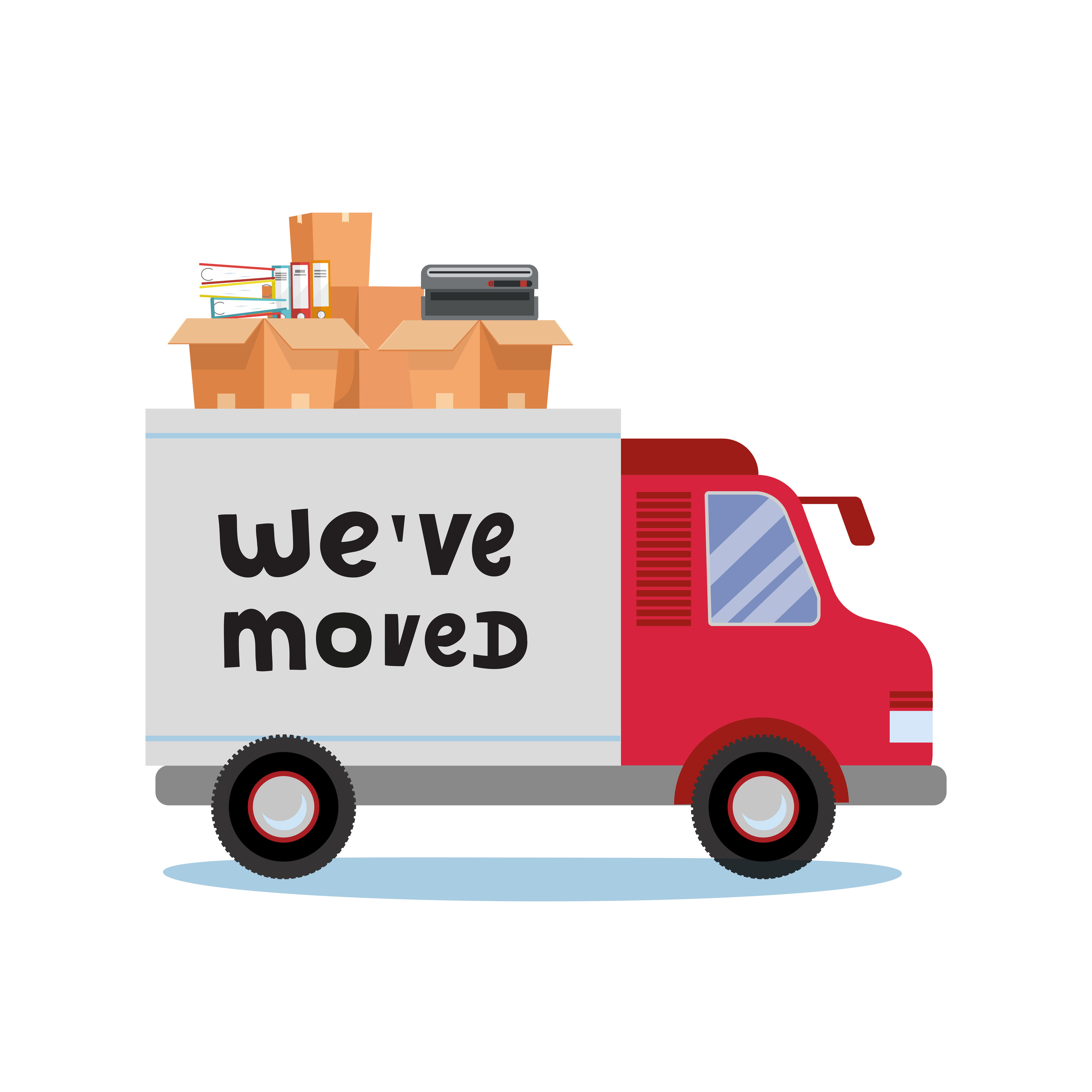Out Of State Moving Truck Rental: Your Comprehensive Guide to a Seamless Long-Distance Move cars.truckstrend.com
Moving across state lines is an undertaking that brings a unique blend of excitement and logistical challenges. While hiring a full-service moving company offers convenience, it often comes with a hefty price tag. For those seeking a more budget-friendly and hands-on approach, Out Of State Moving Truck Rental emerges as a highly popular and practical solution. This comprehensive guide will delve into every facet of renting a moving truck for your long-distance relocation, empowering you with the knowledge to navigate the process smoothly and efficiently.
Out-of-state moving truck rental refers to the process of leasing a moving truck from a rental company for a one-way trip from your current residence in one state to your new home in another. It puts you in the driver’s seat, literally and figuratively, allowing you to control the packing, loading, driving, and unloading of your belongings. This method is crucial for individuals and families looking to save money, maintain direct control over their possessions, and enjoy flexibility in their moving timeline.
Out Of State Moving Truck Rental: Your Comprehensive Guide to a Seamless Long-Distance Move
Why Choose Out-of-State Truck Rental for Your Move?
The decision to rent a moving truck for an out-of-state move isn’t just about cutting costs; it’s about control, flexibility, and suitability for various moving scenarios.
- Cost-Effectiveness: This is arguably the biggest draw. Renting a truck is almost always significantly cheaper than hiring a full-service moving company, especially for moves where you’re comfortable doing the packing and heavy lifting yourself. You save on labor costs, packing services, and potentially storage if you manage your timeline effectively.
- Control Over Your Belongings: When you drive the truck, you dictate how your items are packed, loaded, and secured. There’s less risk of damage or misplacement compared to entrusting them to third-party movers. This peace of mind is invaluable, especially for sentimental or fragile items.
- Flexibility in Timing: You set your own schedule for pickup, transit, and drop-off. While rental periods are fixed, you have more leeway to adjust your moving dates and driving pace to suit your needs, avoiding the rigid schedules often imposed by moving companies.
- Suitability for Various Load Sizes: Whether you’re moving a small apartment or a large family home, rental companies offer a range of truck sizes, ensuring you only pay for the space you need.
- DIY Empowerment: For many, a DIY move fosters a sense of accomplishment and independence, allowing them to personally oversee every detail of their relocation.

Key Considerations Before Renting Your Out-of-State Moving Truck
Before you even begin getting quotes, several factors require careful consideration to ensure a successful and stress-free rental experience.

Truck Size: The Goldilocks Principle
Choosing the right truck size is paramount. Too small, and you’ll make multiple trips or leave items behind; too large, and you’ll pay for unused space and face a more challenging driving experience. Rental companies typically offer:
- 10-12 ft trucks: Ideal for studios or 1-bedroom apartments.
- 15-17 ft trucks: Suitable for 1-2 bedroom apartments or small homes.
- 20-22 ft trucks: Good for 2-3 bedroom homes.
- 26 ft trucks: Best for 3-4+ bedroom homes.
Use online truck size estimators provided by rental companies, or create a detailed inventory of your belongings to gauge your needs.

Rental Company Selection
Major players in the out-of-state moving truck rental market include U-Haul, Budget Truck Rental, Penske Truck Rental, and Enterprise Truck Rental. Each has its pros and cons regarding pricing, availability, included features, and customer service. Research their reputations, read reviews, and compare their offerings.
Pricing Structure: Unpacking the Costs
Rental pricing for out-of-state moves is complex. Most companies offer one-way rentals, which include a set number of days and miles.
- Base Rate: The initial cost for the truck and rental period.
- Mileage Charges: Some companies include unlimited mileage, while others charge per mile beyond a specified allowance. For long-distance moves, unlimited mileage is often a better deal.
- Fuel: You are responsible for fuel costs. Trucks are often diesel, which can be more expensive but also more fuel-efficient.
- Insurance: Crucial for protecting yourself and the truck (discussed below).
- Additional Equipment: Dollies, furniture pads, tie-downs, car carriers/dollies all add to the cost.
- Environmental Fees/Taxes: Standard add-ons.
- Hidden Fees: Always ask about late return fees, cleaning fees, or cancellation policies.
Insurance: Don’t Skimp on Protection
Your personal auto insurance policy likely does not cover rental moving trucks. This is a common and costly misconception. Rental companies offer various coverage options:
- Damage Waiver (DW) or Collision Damage Waiver (CDW): Covers damage to the rental truck itself.
- Supplemental Liability Insurance (SLI): Covers damage to third-party property or injury to others.
- Personal Accident Insurance (PAI): Covers medical costs for you and your passengers.
- Cargo Protection: Covers your belongings in transit.
Review your existing insurance policies (homeowners, renters, auto) and credit card benefits to see if any coverage extends to moving trucks, but err on the side of caution and consider the rental company’s options.
Towing Needs
If you plan to tow your personal vehicle, you’ll need a car hauler (all four wheels off the ground) or a tow dolly (two wheels on the ground). Ensure the truck you rent has the towing capacity and proper hitch. This adds significant cost and complexity to the drive.
Availability and Booking
Out-of-state rentals are popular, especially during peak moving seasons (late spring to early fall, end of month). Book your truck as far in advance as possible (4-6 weeks is ideal) to secure your preferred size and dates, and to potentially get better rates.
Driving Experience
Driving a large, heavy truck is different from driving a car. Consider your comfort level. Trucks have different blind spots, require more stopping distance, and can be challenging in tight spaces.
The Rental Process: A Step-by-Step Guide
Once you’ve considered the key factors, you’re ready to embark on the rental journey.
-
Step 1: Research and Compare Quotes:
Obtain detailed quotes from at least three different companies (U-Haul, Budget, Penske, Enterprise). Be specific about your pickup and drop-off locations, dates, and the truck size you need. Inquire about all potential fees, including mileage, insurance, and equipment. -
Step 2: Determine Your Exact Truck Size and Equipment:
Use the estimates you gathered. If in doubt, it’s often better to go slightly larger than too small, especially for long-distance moves where you can’t easily go back for more items. Confirm if you need dollies, blankets, or a car carrier. -
Step 3: Book Your Truck:
Once you’ve chosen a company and confirmed your needs, make your reservation. Get a written confirmation that details all charges, pickup/drop-off locations, dates, and included mileage. -
Step 4: Understand the Contract:
Before signing, read the rental agreement thoroughly. Pay close attention to clauses regarding fuel levels (return it with the same amount you picked it up with), late fees, cancellation policies, and insurance coverage. Clarify any ambiguities. -
Step 5: Inspect the Truck Before Departure:
Before driving off the lot, do a walk-around inspection with the rental agent. Document any existing dents, scratches, or damage with photos or videos. Check the tires, lights, mirrors, and fluid levels. Report any issues immediately to avoid being charged for pre-existing damage. Ensure the fuel level is noted accurately. -
Step 6: Loading and Driving:
Load your heaviest items first and distribute weight evenly. Secure everything with tie-downs. Drive cautiously, allowing extra braking distance, wider turns, and being mindful of height clearances (bridges, overhangs). Plan your route to avoid narrow streets or low bridges. -
Step 7: Drop-off:
Return the truck to the agreed-upon drop-off location by the specified time. Ensure it has the correct fuel level (typically the same as pickup). Clean out any trash or debris. Do a final walk-around inspection with an agent, noting the truck’s condition and getting confirmation of its return.
Essential Tips for a Smooth Out-of-State Move
- Book Early: Especially if moving during peak season or holidays.
- Confirm Roadside Assistance: Know what to do and who to call if you experience a breakdown.
- Pack Smart: Use sturdy boxes, label everything, and create an "essentials" box for items you’ll need immediately upon arrival.
- Don’t Overload: Adhere to the truck’s weight limits to ensure safety and prevent mechanical issues.
- Plan Your Route: Account for fuel stops, rest areas, and potential tolls. Use a GPS that can factor in truck routes and avoid low clearances.
- Know State Driving Laws: Speed limits for trucks can differ from cars, and some states have specific regulations for commercial vehicles or large trucks.
- Pack an Emergency Kit: Include a first-aid kit, tools, flashlight, jumper cables, and water.
- Get Extra Equipment: Moving dollies, hand trucks, and furniture pads are invaluable for protecting both your items and your back.
- Share Driving Duties: If possible, have another licensed driver to share the long stretches.
Potential Challenges and Solutions
Even with careful planning, unexpected issues can arise. Here’s how to mitigate common challenges:
- Unexpected Costs: Fuel, tolls, extra mileage, and late fees can add up.
- Solution: Budget generously for these variables. Ask detailed questions about all potential fees during booking. Use a fuel cost calculator for your route.
- Breakdowns: Mechanical issues can derail your schedule and budget.
- Solution: Choose a reputable company with reliable, well-maintained vehicles and 24/7 roadside assistance. Understand their breakdown policy before you leave.
- Availability Issues: Your preferred truck size or pickup/drop-off location might not be available.
- Solution: Book as far in advance as possible. Be flexible with your moving dates or consider alternative pickup/drop-off locations (e.g., a nearby city).
- Driving Fatigue/Difficulty: Long hours behind the wheel of a large truck can be tiring and stressful.
- Solution: Plan for frequent breaks, stay hydrated, and get plenty of rest. If possible, share driving responsibilities. Practice driving the truck in a large, empty parking lot before heading out on the highway.
- Drop-off Location Changes: Sometimes, the original drop-off location might change or be closed.
- Solution: Confirm drop-off details with the company a day or two before arrival. Have the branch phone number handy.
Illustrative Price Table for Out-of-State Moving Truck Rental
Disclaimer: The prices below are highly illustrative estimates and can vary wildly based on:
- Distance: Longer distances cost more.
- Truck Size: Larger trucks are more expensive.
- Time of Year: Peak moving season (summer, end-of-month) drives prices up.
- Availability: Limited supply can increase costs.
- Specific Route: Demand on particular routes can influence pricing.
- Included Miles/Days: Some quotes include more.
- Promotions/Discounts: Always check for current deals.
You MUST obtain direct quotes from rental companies for accurate pricing tailored to your specific needs.
| Rental Company | Truck Size (e.g., ft) | Estimated Base Rental Cost (e.g., 1,000-mile move) | Typical Included Mileage | Additional Mileage Cost (per mile) | Optional Insurance Packages (Cost Range) | Other Common Costs (Examples) |
|---|---|---|---|---|---|---|
| U-Haul | 10 ft | $800 – $1,300 | Variable (often generous) | $0.40 – $0.70 | Safemove, Safemove Plus ($40 – $150+) | Fuel, Taxes, Environmental Fees, Pads, Dollies |
| 15 ft | $1,000 – $1,700 | Variable (often generous) | $0.40 – $0.70 | |||
| 26 ft | $1,500 – $2,500+ | Variable (often generous) | $0.40 – $0.70 | |||
| Budget | 12 ft | $750 – $1,200 | Often Unlimited | N/A (if unlimited) | Various protection plans ($35 – $120+) | Fuel, Taxes, Roadside Assistance (optional) |
| 16 ft | $950 – $1,600 | Often Unlimited | N/A (if unlimited) | |||
| 26 ft | $1,400 – $2,300+ | Often Unlimited | N/A (if unlimited) | |||
| Penske | 12 ft | $850 – $1,400 | Often Unlimited | N/A (if unlimited) | Limited Damage Waiver, Supplemental Liability ($40 – $150+) | Fuel, Taxes, Car Carrier/Tow Dolly |
| 16 ft | $1,000 – $1,800 | Often Unlimited | N/A (if unlimited) | |||
| 26 ft | $1,600 – $2,700+ | Often Unlimited | N/A (if unlimited) |
Note: Car carriers/tow dollies typically add an additional $150 – $400+ to the rental cost.
Frequently Asked Questions (FAQ)
Q: Can I rent a moving truck one-way for an out-of-state move?
A: Yes, one-way rentals are standard for out-of-state moves and are offered by all major truck rental companies. You pick up the truck in one location and drop it off in another.
Q: Do I need special insurance for a rental moving truck?
A: Your personal auto insurance typically does not cover rental moving trucks. It is highly recommended to purchase coverage from the rental company (Damage Waiver, Supplemental Liability, Cargo Protection) or confirm if your credit card offers any applicable benefits.
Q: How far in advance should I book my out-of-state moving truck?
A: It’s best to book at least 4-6 weeks in advance, especially if you’re moving during peak season (summer, end of the month) or around holidays.
Q: How do I know what size truck I need?
A: Most rental companies offer online truck size estimators. As a general rule: a 10-12 ft truck is for studios/1-BR; 15-17 ft for 1-2 BR homes; 20-22 ft for 2-3 BR homes; and 26 ft for 3-4+ BR homes. When in doubt, go slightly larger.
Q: Are tolls included in the rental price?
A: No, tolls are typically not included and are your responsibility. Plan your route to identify potential tolls and have cash or an electronic toll pass ready.
Q: Can I tow my car behind the rental truck?
A: Yes, most rental companies offer car haulers (for all four wheels off the ground) or tow dollies (for two wheels off the ground) for an additional fee. Ensure the truck you rent has the necessary towing capacity.
Q: What happens if I’m late returning the truck?
A: Rental companies usually charge late fees, often daily rates. It’s crucial to communicate with the company immediately if you anticipate a delay to avoid excessive charges.
Q: Do I need a special driver’s license to drive a moving truck?
A: For most standard moving trucks (up to 26 feet), a regular Class D (or equivalent) driver’s license is sufficient in the U.S. You generally do not need a Commercial Driver’s License (CDL).
Conclusion
Out-of-state moving truck rental offers an empowering and cost-effective alternative to full-service movers for your long-distance relocation. While it demands more hands-on involvement, the benefits of greater control over your belongings and significant cost savings are undeniable.
Success hinges on meticulous planning, thorough research, and careful execution. By understanding the various considerations, navigating the rental process step-by-step, and heeding practical advice, you can transform the daunting task of an out-of-state move into a manageable and even rewarding experience. With the right truck, proper preparation, and a clear understanding of the road ahead, you’ll be well on your way to settling into your new home.

